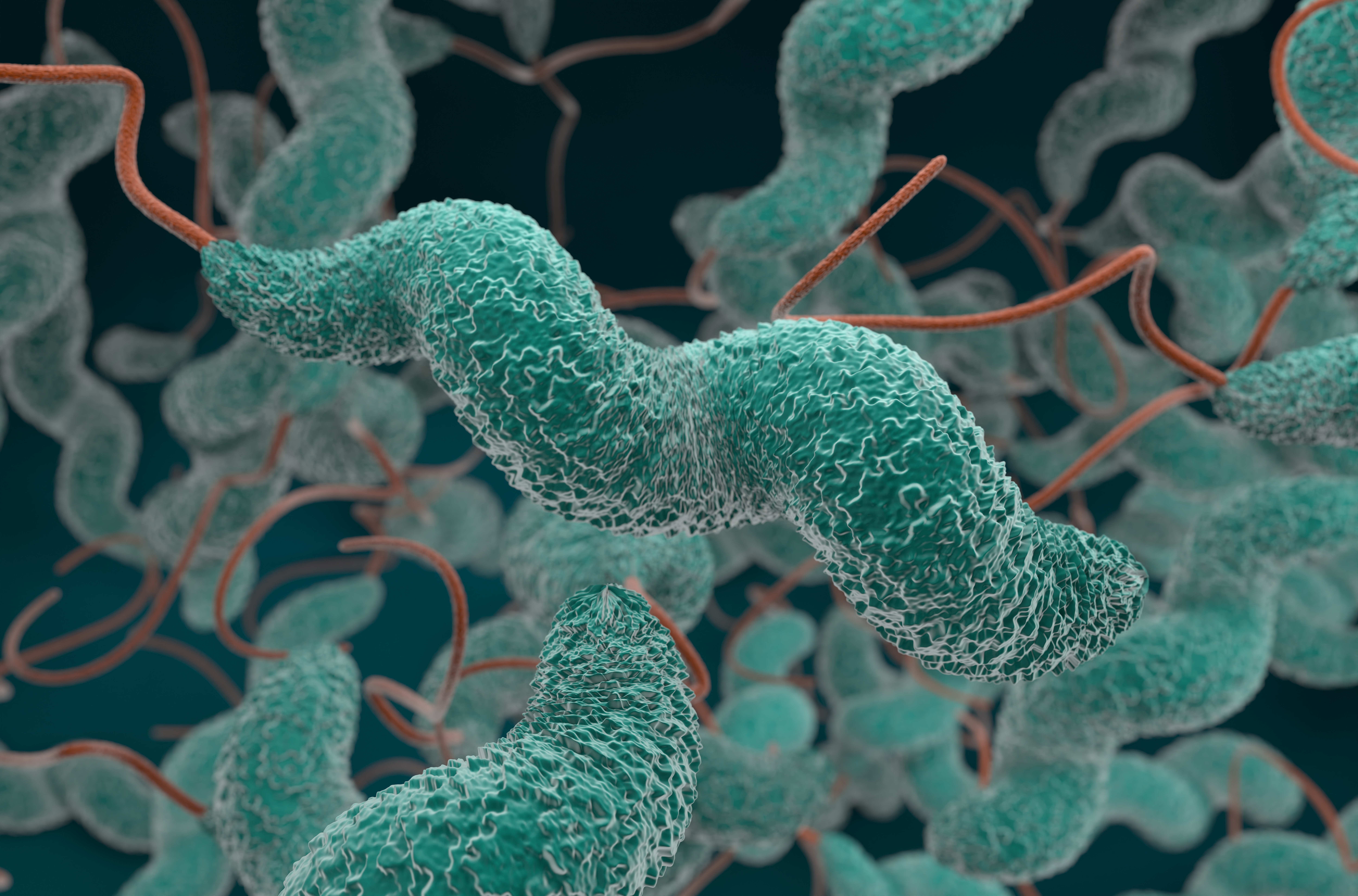 Intelligent Design
Intelligent Design
 Medicine
Medicine
Diarrhea and Design: A Response to Jerry Coyne

In my new book, Foresight: How the Chemistry of Life Reveals Planning and Purpose, I argue that the synergistic action of diarrhea and the appendix provides a strong case for foresight and thus for intelligent design. Jerry Coyne, writing at Why Evolution Is True, has responded. For that I am grateful. See, “ID craziness: Diarrhea and the appendix are signs of intelligent design.”
I wish, enthusiastically, to reply. The subject under discussion is so-called vestigial organs, specifically the appendix. For decades we were told that — due to evolution — our body includes organs that have lost their functions and are therefore in the process of being eliminated. Dr. Coyne adds that some of those condemned organs, by accidently finding other functions, may get lucky enough to escape extinction. This is possible, I agree. The “vestigial organs” are taken as strong evidence for evolution and against ID. After all, an intelligent designer would have no use for useless organs. With that I also agree.
However, we must let the data speak. When we do, learning more about the physiology of our body, we find that “vestigial organs” have amazing functions after all.
Let the Data Speak
The appendix, for example, performs not just a single function, but several. However, for Coyne and most Darwinists, there is no such thing as bad news. If a previously “functionless” organ like the appendix is discovered to have functions after all, one may always say that it escaped extinction by finding these new functions, thus providing adaptive “advantages.” Nothing, it seems, is more endlessly adaptable than the theory of evolution.
Meanwhile the number of vestigial organs continues to shrink. Once they were listed at 86 or more. Now they are down to just a few. Dr. Coyne says there are “many vestigial features that have no known function at all,” but for humans he cites only “the muscles in human ears that can move them about.” He also mentions “snake limbs.”
Regarding the appendix and diarrhea, he writes:
Let’s see if there’s good evidence for design here. First of all, diarrhea may well be a body’s way of flushing out toxic substances and microbes from the gut. There’s no problem with that evolving by natural selection, and this has been recognized by advocates of Darwinian medicine for a long time… [T]here’s no barrier to seeing how a body’s expulsion of noxious substances could have been adaptive….
It’s entirely possible, for instance, that features of the gut causing diarrhea evolved as an adaptive response to toxins and bad microbes.

Is this indeed “entirely possible” or more like wishful thinking? I agree that diarrhea can indeed be beneficial and “adaptive.” But the problem with this interpretation is quite obvious. Diarrhea only provides an adaptive advantage when perfectly tuned with the digestive system! If Dr. Coyne had described a little of the physiology and biochemistry of diarrhea, his readers would have been able to appreciate how beautiful and mind-boggling it is.
First, in our intestines, there are the mechanisms for absorbing and secreting water and electrolytes (minerals in the body that carry an electric charge). These processes are so finely balanced and dynamic that their operation requires a myriad of individual cell membrane transporters, electrolyte-secreting organs, highly selective and specialized membrane proteins, and more. The system is so intricate that the author of a review on the physiology of diarrhea throws up his hands at the complexity of it all: “Attempting to outline the complex, multifaceted relationships among epithelial ion-transporting cells, epithelial endocrine cells, mesenchymal cells (fibroblasts, mast cells, neutrophils, T and B lymphocytes, eosinophils, etc.), and nerves is beyond the scope of this review.” The author provides a whole table with many entries just for the reader to “glean some of the complexity.” It has been said that evolution hopes we don’t know chemistry. I would add that it hopes we don’t know physiology, either.
The Best Solution
Diarrhea, of course, can be lethal. But most diarrhea is of the good type, going away on its own within a few days. It serves a great purpose, offering the best possible solution in a system under outside invasion. It flushes out a great variety of toxic substances and microbes from the gut, whether coming from bad food, contaminated water, or some other source. It is highly diverse yet efficient in handling different types of infections, including those from viruses (e.g., norovirus and rotavirus), bad bacteria (e.g., Campylobacter, Escherichia coli, Salmonella, and Shigella), and parasitic infections (e.g., Cryptosporidium enteritis, Entamoeba histolytica, and Giardia lamblia).
Each of these is detected by highly sophisticated sensor molecules in our intestine, triggering just the right level of electrolyte imbalance. This produces a finely tuned discharge of intestinal contents, greatly in excess of the ordinary, while at the same time not normally being fatal to the host. That is, different gut pathogens trigger different but fitting levels of diarrhea. What a masterful solution!
It is so intricate and well balanced that diarrhea is notably perilous in babies, for whom the wide variety of intestinal transport mechanisms — those concerned with the absorption and secretion of fluid and electrolytes — are not yet fully developed.
An All-or-Nothing Game
Now think of the extreme risk for any organism in evolving diarrhea. For it to be “beneficial” and therefore adaptive, diarrhea first must be tuned to last for just the right amount of time. There is no room for trial and error. Too little of the intestinal power wash and it becomes useless. Too much and the result is fatal dehydration. Diarrhea is an all-or-nothing game. It is a foresight-or-death solution.
Second and perhaps even more important, the whole mechanism should also be highly selective. It should be triggered only by stimulus from “bad bacteria,” while preserving “good bacteria.” If good bacteria also triggered the response, the result, again, would likely be fatal. The need for foresight in developing this mechanism is obvious.
If the intestine were able to handle all types of bad bacteria, there would be no need to flush it out. Some would argue that a perfect designer would do just that — install a diarrhea-free all-powerful intestine — instead of implementing the combined diarrhea/appendix solution. I disagree! This conclusion is based on the assumption that we know better. Science has taught us, however, over and over again, that solutions in nature are much smarter than we are.
Turning to the Appendix
After dwelling on diarrhea, Jerry Coyne then discusses the appendix:
Under many circumstances, the gut could repopulate itself from natural sources like food or contact with other individuals. But there might then be an additional advantage to those individuals who were able to sequester some of their gut bacteria on a wormlike structure of the gut: the appendix. That would be subsequent evolution by natural selection — no designer needed here, either. The whole sequence: appendix reduction —> evolution of diarrhea response —> co-option of the appendix to serve as a reservoir for “good microbiota”, can evolve by natural selection. And we don’t even need the first step should the human appendix prove not to be vestigial. Regardless of the sequence, no evolutionary “foresight” is needed.
…But what is certain is that IDers like Eberlin and Klinghoffer are suffering from an extreme failure of the imagination in saying that diarrhea evinces an Intelligence On High, and that the appendix was put in place in advance to help those individuals who developed diarrhea.
Yes, indeed, it takes “imagination” to explain away diarrhea and the appendix. But it seems that Dr. Coyne’s evolutionary explanation consists of nothing but imagination. To be anything more than a just-so story, his explanation should include at least some of the many coordinated mutations that would be required for beneficial diarrhea and the appendix to evolve.
If our gut could be properly repopulated by “sources like food and contact with other individuals,” then such a wonderfully designed organ as the appendix would seem not to offer so great an advantage at all. It would hardly be worth the risk of appendicitis. But then another question: If the appendix offers no special advantage, why we do not see two types of humans, with or without an appendix? Similarly, I would ask, why we do not see two types of humans, with or without tonsils, with or without a coccyx, or other such “vestigial” organs?
I was amazed to learn recently that it may be possible that the appendix keeps changing its position according to the presence of infection. The more we learn, the more wonder we discover in this previously “useless” organ.
A Vestigial Theory
As I wrote in Foresight:
Darwin and his followers assumed the appendix was a useless vestigial organ, left over from when we walked on four legs and ate a vegetarian diet. This evolutionary legend, based on lots of rhetoric and little evidence, has been around at least since Darwin argued for it in The Descent of Man. So the Darwinian argument that the appendix is a vestigial organ that supports evolutionary theory is itself vestigial, a leftover of nineteenth-century Darwinian biology. We know better now.
Darwinian evolution expects us to trust in the unlimited power of mutations and natural selection to create all the extraordinary and highly sophisticated mechanisms we see in life. We are expected to trust that this unguided, blind, mindless process created an intestine, with its marvelous, exquisitely tuned absorption and secretion mechanisms for water and electrolytes, with the myriad of biomolecules and machines that operate in it. We are expected to trust that diarrhea — finely tuned, highly selective, and perfectly balanced for different types of invaders — once evolved in the intestine without killing its possessor from dehydration or by mistakenly flushing out good gut bacteria. We are supposed to believe that genetic accidents created a perfectly designed sack and placed it at just the right location in the intestine, outside the normal one-way flow of food and germs. We are supposed to believe that a vestigial organ happened to escape extinction by finding several new functions.
We are supposed to have faith in all this without ever wondering just how it all happened. What’s more, we are supposed to believe this wonder repeated itself in nearly the same fashion at least 32 times in different mammal species. I must confess I am short of such a faith. Instead, I surrender to the best inference.
A Lack of Faith
I respect Coyne’s position, but, lacking his faith, I interpret this evidence more naturally as pointing to an ingenious mind, implementing solutions to problems anticipated in advance. I see it as possible that this particular solution worked perfectly until we started to make two mistakes in modern societies: establishing crowded cities with severe poverty, and contaminating our drinking water, while establishing other bad habits not yet realized.
As I noted in Foresight, a recent global survey has suggested that appendicitis is much less common in developing countries than in developed ones, and that “the epidemiologic patterns of appendicitis support the notion that appendicitis is driven by multifactorial environmental triggers associated with the industrialization of society.”
For other examples of foresight in life and in the universe, I encourage you to read my book. Nature is filled with ingenious solutions to problems that would, in the course of our normal experience, require tremendous foresight and planning. It is not the case of diarrhea and appendix alone that makes a strong argument for design. It is the great combination of many amazing examples that impress us with the power of the designer’s intelligence.
Image: Campylobacter jejuni, a leading culprit in causing stomach upset, by De Wood, Pooley, USDA, ARS, EMU. [Public domain], via Wikimedia Commons.
